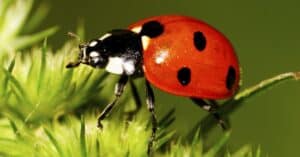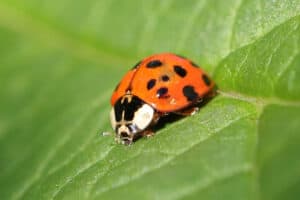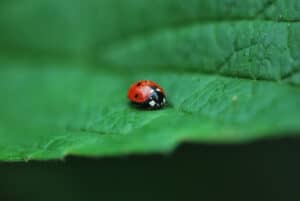When it comes to insects, telling the differences between the genders at a glance can be quite challenging. However, with enough time and effort, anyone can train their eye to pick up on the subtle distinctions between male and female insects. In the case of ladybugs, some people believe these insects are strictly one gender. Despite their name, some of these insects are actually gentlemen! Today, we explore four key differences between male and female ladybugs that you might not know.
Ladybugs: A Brief Overview
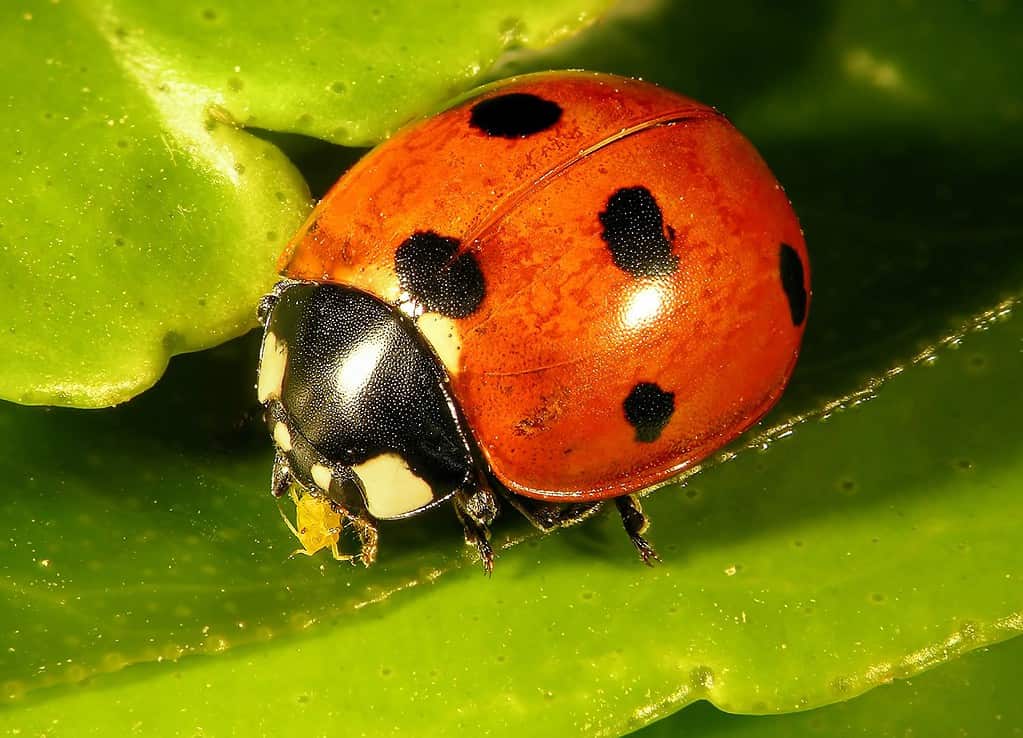
Ladybugs are sometimes called “ladybirds.”
©Protasov AN/Shutterstock.com
Throughout the years, the name “ladybug” has caused some people to believe that these insects are female only, and this is not the case whatsoever. According to Lost Ladybug, “The most common legend as to how ladybugs got their name is that during the Middle Ages in Europe, swarms of aphids were destroying crops. The farmers prayed to the Virgin Mary for help – and help came in the form of ladybugs that devoured the plant‐destroying pests and saved the crops! The grateful farmers named these insects ‘Our Lady’s beetles,’ a name which has endured to the present day.”
While some people are grossed out by insects, ladybugs are often looked at as an omen of good fortune. A visit from one can mean that good luck is on its way, love is in the air, or that you’ve been visited by a lost loved one. In addition, some people believe that these insects represent fertility, and having one land on you can mean your family might expand soon. Whatever you believe them to represent, one thing is undeniable: these little beetles are adored by many. Let’s dive into the differences between the two genders of this insect.
1. Size
Female ladybugs are actually larger than their male counterparts. It might be hard to tell the difference between the two genders at a glance, but if you look closely, you’ll notice a slight size difference between the two. Although there are rumors that one gender has more spots than the other, this is not the case. As a general statement, either gender can have any number of spots or even no spots at all. The only influence on the color and the number of spots a ladybug has is their species. There are over 5,000 different species of ladybugs, and they come in many different colors and patterns.
2. Antennae Length
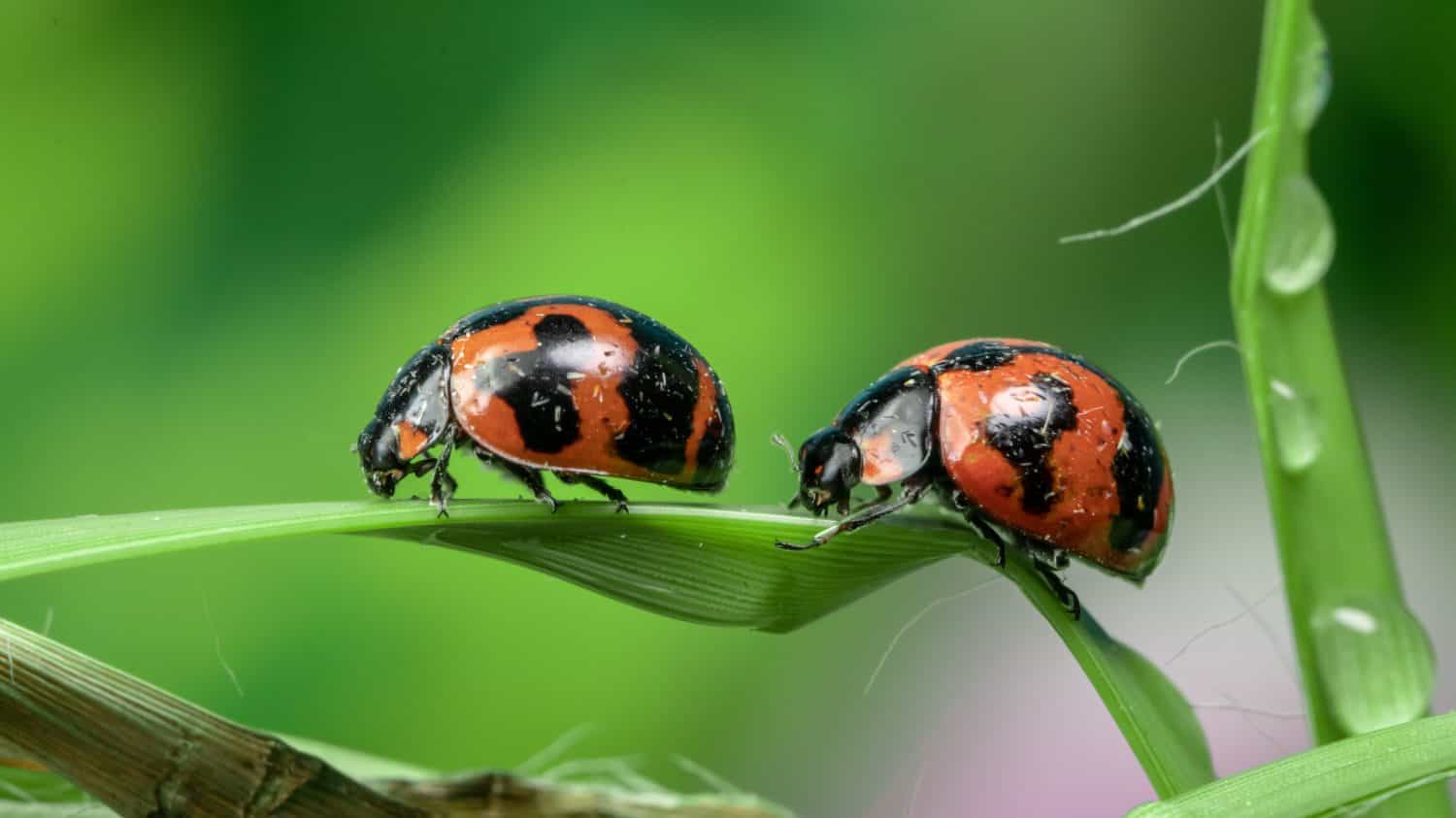
Ladybugs spend about 30 days as juveniles before entering their pupal stage. Pupating takes about 15 days, and after this, many ladybugs will live for roughly one year as adults.
©Md Rahtul Islam/Shutterstock.com
In the wild, some insect species have vastly different lengths of antennae between genders. This can be an easy way to identify whether an insect is male or female at a glance, but this is not so easy when it comes to ladybugs. In some ladybug species, such as the Asian lady beetle, we commonly see that males have slightly longer antennae than females. However, the difference is only slight, and it’s best appreciated with a visual aid, such as a microscope.
3. Behavior
Although it might be hard to tell in a casual situation, ladybug mating behavior can help indicate gender. As we stated above, male ladybugs are the smaller of the two sexes. During copulation, they latch on to the hard wings of the female for an extended period of time. This is to ensure that fertilization is successful. After roughly two hours, the ladybugs go their separate ways. About two months or so later, the female searches for a suitable place to lay her eggs. In addition, female ladybugs spend more of their time searching for and eating food. This aids her in egg production.
4. Body Shape
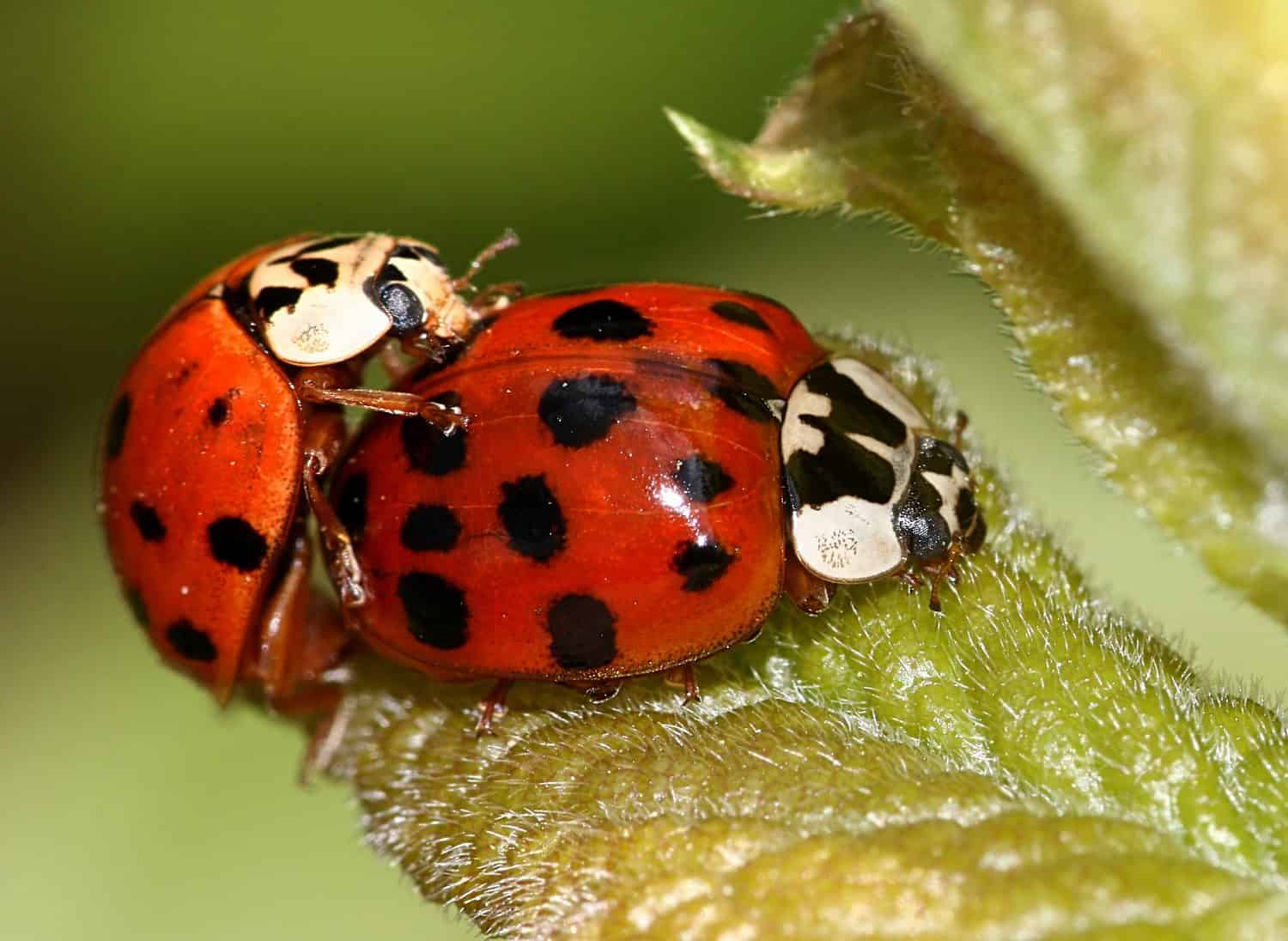
Ladybugs are hardy and many are able to withstand cold temperatures during the winter.
©Ger Bosma Photos/Shutterstock.com
In addition to being the smaller of the two genders, male ladybugs also have a slenderer body. Females on the other hand appear rounder in shape. However, these differences are very subtle. and it may be difficult to discern without looking at the genders side by side. Sexual organs are not visible outside of copulation. However, if you’re able to catch two ladybugs in the act, you may be able to see them if you have a microscope handy. Despite this, behavior is a much more significant indicator of gender.
Final Thoughts
It might be difficult to get a good look at a ladybug long enough to determine its gender, so don’t get discouraged if you’re unable to tell right away. With any luck, one might pay you a visit sometime soon!
The photo featured at the top of this post is © Ger Bosma Photos/Shutterstock.com
Thank you for reading! Have some feedback for us? Contact the AZ Animals editorial team.



